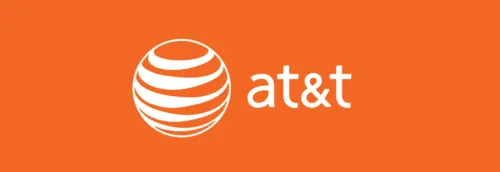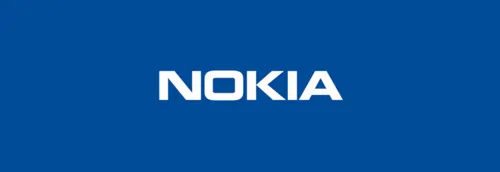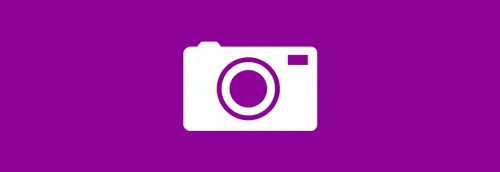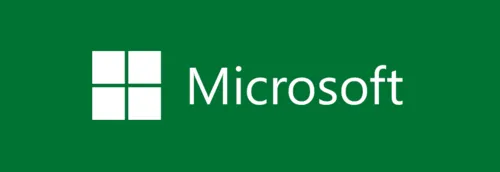Windows Phone "Evangelism" Story

Since 2010, I’ve helped well over 20 friends and colleagues switch to Windows Phone from their previous mobile platform. Not only have I made it known that Microsoft’s mobile operating system is a compelling platform that stands out from its competition, but that its innovation in design won’t only transform the mobile market, but the future of software UI and UX as a whole. Subsequently, I’ve incorporated Microsoft’s Windows Phone design language, oftentimes referred to as “Metro UI,” in my personal branding and academic endeavors.

In 2008, I sensed the imminent birth of a new Microsoft. Their Zune product line was taking them places in UX and UI to which that they had never before ventured, including what became the precursor to their current design language. Code-named “Metro,” this new transformation in user interface would end up being featured in Windows 8, Xbox, Office, and other a host of other Microsoft services.

Before Windows Phone was released, I connected with Josh Phillips, who was a Senior Program Manager at Microsoft (who had previously worked on Zune), and planned on shadowing him to observe and test pre-release Windows Phone devices. Although I submitted the non-disclosure agreements and set a meeting time, unanticipated scheduling conflicts (involving me being stuck in Europe due to hazardous weather) prevented the job shadow from occurring. Despite this unfortunate setback, I was still curious about the platform, and was compelled to learn more about it.

When Windows Phone 7 was released in 2010, I became an early adopter of the new mobile platform with the purchase of an LG Quantum and my first 2-year contract with AT&T. A software update released soon thereafter, titled “NoDo,” that I was able to load onto my device early. My fascination with the direction that the platform was going really began here during my senior year of high school.

In 2011, Windows Phone 7.5, named “Mango” released, wherein I began to sway others to switch to the platform from other mobile offerings. At this point, I began contributing to the online Windows Phone community as well as attend the Seattle Windows Phone “Inner Circle” event (with my friend and colleague Nick Dunne) which showcased the Mango update. This is also where I met Ben Rudolph (Windows Phone Evangelist) and other Microsoft employees. I also wrote a paper entitled “Windows Phone: How a Revolutionary OS Will Transform the Mobile Market” for an MLA Research Writing college course on the 1st anniversary of Microsoft’s mobile OS.

In January of 2012, my brother Donald Kimball purchased his own Windows Phone 7 device (a Dell Venue Pro), switching from his Android handset. Along with Alec Moore (student and programmer-in-training at the time), Donald was able to take a mobile development class from Jared Potter, the Windows Phone Design Integration Lead at the time, who taught part-time at my brother’s high school. As a result, I have been able to connect with Jared on several occasions.

Several months later, I had converted 5 people to Windows Phone, and generated enough awareness to receive the unofficial “Windows Phone Salesman Award” presented by Northwest University Resident Assistant Luke Hicks on my dormitory floor. During spring finals week at college, I upgraded to a Nokia Lumia 900, Nokia’s Windows Phone 7 flagship device. During the summer and into the 2012 fall semester, I continued to spread the word about Windows Phone, and my influence continued to grow in the immediate area as well as online. I was able to leverage my various positions as a college student and use them as networking opportunities to meet other Windows Phone enthusiasts and developers. For example, due to my position as a Foursquare On-Campus Ambassador and SuperUser, I was able to give Jeff Wilcox (Principal Software Development Lead at Microsoft) early input about his Foursquare Windows Phone app, 4th and Mayor.

At this point, I began to align my personal brand with Windows Phone, and published my personal website and social profiles with the Windows Phone-style “Metro” interface. This ranged from creating “Me Tile” avatars on my web profiles (emulating the “Me Card” tile seen on Windows Phone Start Screen), to Windows Phone-themed tiled Twitter backgrounds, and custom Metro UI Facebook cover photos. Despite these images often being created with rudimentary freeware programs, such as Microsoft Paint and GimpShop, many Windows Phone enthusiasts and Microsoft partners took notice to my creative design, and sought me out. I was contacted by Software Senior Developers Dale Goff and Alex Golesh via Twitter and was given a job creating a Developer Staffing website with the Metro UI design language for Sela Software.

In December of 2012, soon after the release of Windows Phone 8, I upgraded my handset to a Nokia Lumia 920, Nokia’s first Windows Phone 8 flagship device. Nokia’s innovation reached a new peak at this point, with wireless charging, the newest guerrilla glass technology, and a PureView camera which took incredible low-light photos. These selling points became points of conversation amongst my friends and colleagues, and at this point I had converted somewhere upwards of a dozen smartphone users.

Early 2013 is where my Windows Phone influence really took off. As I continued networking on Twitter, Facebook, LinkedIn and other social media platforms, I connected with some key individuals: Edwin Rodriguez-Duplesis, Robert Shurbet, Swapnil Bandiwadekar, Brenna Gould and Greg Sullivan.

Edwin Rodriguez-Duplesis, an Information Systems and Technical Services Specialist, was particularly active in the Windows Phone online sphere where we connected. He soon added me to a Facebook group he co-created called “Tech Posse,” which was a circle of around 50 individuals at the time who were passionate about technology news and adoption. Through this group alone I made many more Windows Phone-enthusiast connections including Graphic Design student Chris Lindhartsen and Windows Phone Central Managing Editor Sam Sabri.

Robert Shurbet, a Senior Application Developer and Senior Programmer Analyst, developed a Windows Phone Twitter app called Hashtastic, to whom I gave feedback as an early adopter. Using his app, I was able to post weekly “Follow Friday” posts on Twitter in an automated, streamlined process which helped me extend my online reach. Since then, I’ve participated and have been featured in numerous Hashtastic press releases, including showcases of major updates, private betas, and new features.

Swapnil Bandiwadekar, an Independent Information Technology and Services Professional from the Mumbai area in India, had taken an interest in my writing on Windows Phone and took initiative to connect with me. We decided to form a short-term partnership wherein I would write several articles for his tech news blog, TheSwapFiles, and in turn, I would get some extra exposure as a writer. We ended up collaborating on several blog posts, wherein I contributed my own original content to his site. My additions to TheSwapFiles included a “Top 25 Best Windows Phone Apps” post which was featured on the Windows Phone subreddit and other places. Swapnil also connected with Nokia US, and coordinated the delivery of a Nokia Lumia 521 review device which I was able to review.

Brenna Gould, a Business Administration and Management Information Systems student (now graduated) from Western Washington University connected with me on Twitter as a fellow Windows Phone enthusiast. Eventually, I added her to Edwin’s Tech Posse Facebook group where she became a valuable contributor. A few weeks after she was added, Brenna shared an opportunity with me to see Greg Sullivan, the Senior Marketing Manager of Windows Phone. She explained that Greg was visiting her school to give a presentation on marketing. When she invited me, I took up the opportunity. As a result, not only was I able to meet Brenna in-person, but Greg as well.

After Greg Sullivan gave his presentation at Western, I was able to set up a meeting with him for the end of spring finals week. He invited me to visit his office at Microsoft’s headquarters in Redmond, WA where he gave me a tour of campus and shared a little bit about his work history at the company. Since then, we’ve remained in contact.

Starting in the summer of 2013, I developed Windows Phone-themed designs for social media profiles, such as Facebook covers and Twitter backgrounds. Since July 2013, I began offering to create “Me Tile” Windows Phone-themed avatars for fellow Windows Phone enthusiasts. This free service was meant to raise awareness for Windows Phone and allowed fans to connect with each other. As this initiative began to gain momentum, I reached the point of being overwhelmed with requests, especially after it was posted on the Windows Phone subreddit. Ertay Shashko, a Microsoft Student Partner and Expert from Struga, Macedonia connected with me and, with my permission, used my idea to build a Windows Phone app called Tile Me! This unique app allowed the Me Tile-creating process to be automated and done by the user (check out Daniel Rubino’s WPCentral story about it). As of October 2013, the app has received over 60,000 downloads.

I’m featured in several places in the app, as well as the promo video created for Tile Me! (created by Ertay’s brother, Alpay Shashko). In addition, I worked with Ertay to produce an app update (in November of 2013) which included a feature to change the user’s Twitter background to emulate a design similar to one I created. This background displays the user’s Windows Phone, a custom screenshot, and showcases their particular handset’s features and specs.

With my upgrade to a yellow Nokia Lumia 1020 last October, never before have people noticed Windows Phone so much. Not a single other competing mobile device can match it’s photo quality, and that stands out. I continue to hear comments from iPhone and Android users like, “I would switch my carrier just for that phone.” For every person that has switched from iOS or Android to Windows Phone, I’ve been happy to help them in the transition. More often than not, the result is a happier smartphone user than before, finally free to encounter a faster, more dynamic, and emphatically personal experience.

In addition to connecting to all of the people mentioned above, I’ve delivered speeches, given presentations, and written academic papers on Windows Phone and am continuing to build even more connections to Microsoft’s mobile operating system. Post-college, I plan on expanding my passion and enthusiasm for Windows Phone to something beyond just a hobby: namely, a career.
